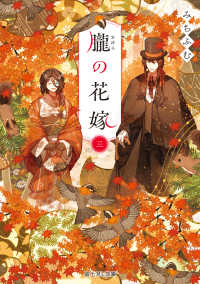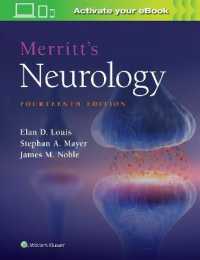- ホーム
- > 洋書
- > 英文書
- > Literary Criticism
Full Description
This book looks afresh at the history of hysteria to nuance and complicate existing understandings of the relationship between medicine and women's writing. Through in-depth analyses of both medical texts and women's fiction published between the 1850s and 1930s, it documents the prevalence of scientific ideas in popular culture and how hysterical symptomatology has been appropriated, reworked and satirised in literature. Examining novels and short stories by Charlotte Brontë, Rhoda Broughton, Sarah Grand, Lucas Malet and Djuna Barnes, Medicine and Women's Fiction traces women writers' fascination with the materiality and instability of the body, troubling inherited truths about mental health and gender in literary and medical discourse. In contrast to stereotypical images of hysteria, it draws particular attention to disorder as part of everyday experience: the familiar, mundane ways in which the body goes out of control, from involuntary movements to ghostly hallucinations and unruly organs. Altogether, Louise Benson James re-evaluates what it means to take hysteria seriously in fiction.
Contents
Acknowledgements
Introduction: Treating the Hysterical Body
1. Nervous Narratives: Charlotte Bronte, Villette (1853) and Mid-Century Medical Men
2. Unruly Bodies: Rhoda Broughton's Nancy (1873) and Short Supernatural Fiction
3. Mental Monstrosities, Medical Women and Material Culture: Sarah Grand's The Heavenly Twins (1893) and The Beth Book (1897)
4. Sexual Neuroses and Male Nerves: Lucas Malet's Wages of Sin (1891) and The Survivors (1923)
5. Medical Mythmaking, Modern Science and the Taboo: Djuna Barnes's Ryder (1928) and Nightwood (1936)
Conclusion: 'How Shall I Keep Well?'
Bibliography








